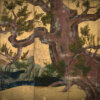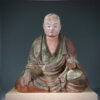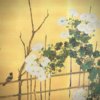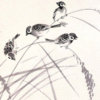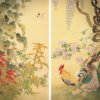Summary | Art History of Japan | Painting | No.4 Taishō Period
Taishō Period
The Taisho period lasted only about 15 years, from 1912 to 1926, but a great variety of works were produced during that time.
The background to this is the victories in the Sino-Japanese and Russo-Japanese wars, which I have just explained.
These victories generated confidence that Japan had joined the first-class nations.
Furthermore, the fact that Japan was economically booming at this time also spurred confidence.
With an increased sense of self-esteem, the Japanese people began to respect individuality, and more and more unique works of art were created.
The first thing that happened during this period was a re-evaluation of Tawaraya Sōtatsu.
Tawaraya Sōtatsu, I introduced you when we talked about the Edo period.
He was a painter of the Rinpa school, wasn’t he?
Although Ogata Kōrin was highly regarded at the time, Tawaraya Sōtatsu was not so highly regarded in Japan, partly because his birth was a mystery.
This is due in large part to the fact that Sakai Hōitsu was infatuated with Ogata Kōrin, not Tawaraya Sōtatsu. Suzuki Kiitsu was also a direct disciple of Sakai Hōitsu, so he naturally inherited his love for Ogata Kōrin.
So yes, Tawaraya Sōtatsu was like a forgotten entity.
So even though Tawaraya Sōtatsu’s folding screens were more and more leaked abroad, Japanese people didn’t seem to mind at all.
It was around this time that a trend emerged within the art world to go back and study the roots of Japanese painting and began to research the classics.
This led to research into the founder of the Rinpa school, Tawaraya Sōtatsu, and a tremendous re-evaluation of his innovative decorative expression as the key to the evolution of Japanese painting at the time.
As a result, the painting style of the Rinpa school, including that of Tawaraya Sōtatsu, was adopted by a great variety of artists.
Tawaraya Sōtatsu attracted so much attention that Okakura Tenshin instructed Yokoyama Taikan and others to study Tawaraya Sōtatsu and incorporate his style into their own paintings.
There was considerable debate in the Japanese art world between the Meiji and Taisho eras about the heavy emphasis on realistic painting.
There was the following opinion, especially among the new school groups.
‘Is it art to depict everything realistically, only what you see? No, it is not. In Japanese painting, there must be an expression beyond realism that cannot be expressed by realism. That expression is the identity of Japanese painting.”
It was thought that the hints for this expression could be found in Tawaraya Sōtatsu and the Rimpa school.
This trend of Rimpa studies continued from around this time until the beginning of the Shōwa period.

